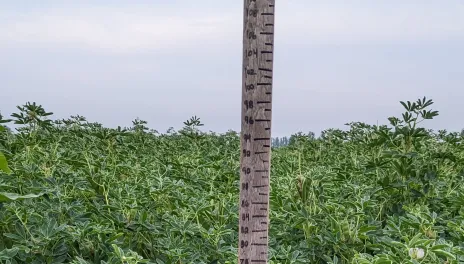Working on the CREC Summer Agronomy Crew
Editor’s note: The Carrington REC employs about 40 full-time and permanent part-time staff, but in the summer we add at least another 40 high school and college students, along with a few retired staff, to work with our Agronomy, Plant Pathology, and Livestock teams during our growing season. This week’s Center Points comes from two of those students who work with our Agronomy team. We’re grateful for the work our summer crews do, and appreciate their youthful approach and insight. We’ll miss them, as they being to return to sports practice and school obligations, but look forward to seeing them again next year.
Working as a summer student employee at the Carrington Research Extension Center entails many opportunities and activities. These opportunities include learning, experiencing research, and being hands-on in an agricultural setting. The assorted activities range from the dreaded hand-weeding to independently taking notes on various crops.
A new year leads to new experiences to be had here on the agronomy crew. Some of which are traveling off-station to our sites near Fingal, Wishek, and Dazey. We enjoy the memorable road trips, especially on the way back when the job is finished.
Note-taking is one new thing we undergo on a weekly basis. Knowledge from our advisor has been passed onto our summer crew so that we can accurately take on this new challenge autonomously. These notes are based on data taken on specific plant growth and height, blooming dates, maturity, and much more. We are tasked and trusted with maintaining an accurate record of these notes and checking on our trials three times weekly.
Besides the date note taking, we take many counts, like stand, spike, and nodule counts. The stand and spike counts are for individual plants across a certain area or row. We do lots of nodule counting which starts by digging up plants from the plots in trials, bagging them up, and taking them to the lab for assessment. We look for small, round growths on the roots for counting. After the nodules are counted, they are sometimes weighed or other times, we open them up to see how many of the counted nodules are pink inside.
If you are interested in learning more about all we do for agriculture at the CREC or know someone interested in experiencing new opportunities with peers, contact our supervisor, Kristin Simons (Kristin.Simons@ndsu.edu), for a chance to join our amazing summer crew.
Written by CREC summer employees
Sierra Friedt and Maddyx Davis
